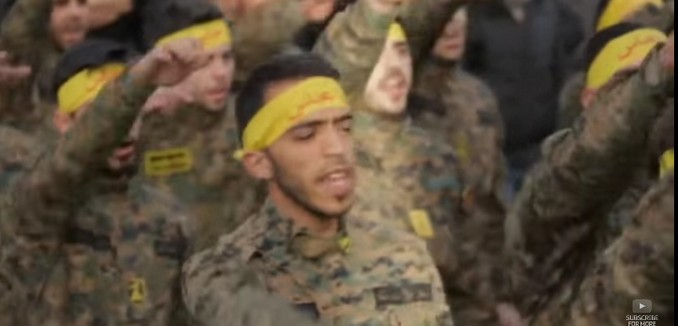Citing comments made by White House officials as well as actions taken by the United States, Tony Badran, a fellow at the Foundation for Defense of Democracies, concluded that the administration has “recogniz[ed] Iranian zones in the Levant as legitimate spheres of influence” in an analysis published today in Lebanon’s NOW media.
Badran explained how this policy has shaped the administration’s approached towards Syria, whose President Bashar al-Assad is heavily supported by Tehran.
Having rejected the recommendation of its traditional allies that it help them remove the Assad regime, the White House has settled on a Syria policy that accepts an Iranian sphere of interest. On the one hand, the administration has opted to work with the Syrian Kurdish forces in the northeast of the country, enabling them to consolidate and connect two of their non-contiguous cantons. However, this policy is not borne of a commitment to Kurdish autonomy in Syria. Rather, it is a convenient option that enables the White House to sidestep the needs of Turkey and the Gulf states. But most importantly, it allows Obama to keep his commitment not to cross Iranian red lines pertaining to Assad and his enclave.
What are those red lines? Since 2012, Iran’s Plan B in Syria has been to secure core strategic territory in western Syria, and maintain contiguity with Hezbollah-dominated Lebanon. Though Obama’s policy has long recognized this Iranian zone of influence in Syria tacitly, the administration is increasingly signaling this recognition publicly.
Badran quoted an administration official, whose comments on Assad’s chemical weapons arsenal inadvertently confirmed his own observation.
Strikingly, the primary concern of the officials who leaked the information was neither about the prospect of Assad using his chemical weapons, nor about the failure of the disarmament deal that the administration had marketed as a major diplomatic achievement. Instead, the officials expressed fear about recent rebel advances and the possibility that Assad’s weapons would fall into the wrong hands.
Badran also notes that, in March, CIA director John Brennan “expressed the administration’s opposition to Assad’s collapse in Damascus.”
When the administration recently approved an arms package for Lebanon, it said that the arms would help the Lebanese Armed Forces (LAF) “enforce United Nation’s security council resolutions 1559 and 1701.” However, as Badran noted, the LAF is actually working against those resolutions by “helping Hezbollah secure its lines of communication with Iran’s Syrian satrapy, and ensuring Lebanon remains joined at the hip with it.”
Badran also mentioned that the administration’s acquiescence to Iran’s hegemony “has long been obvious in Iraq.”
Last week, Jonathan Spyer, director of the Rubin Center, reported on the strong Iranian presence in Iraq.
The leadership of three of the four most powerful militia bodies is linked to Iran. The militias in question — the Badr Organisation, the Kata’ib Hizballah group and the Asaib ahl al-Haq — receive direct assistance from the Iranian Revolutionary Guards. The fourth, the Saraya al-Salam militia of Moqtada al-Sadr, is also pro-Iranian and aided by Iran but maintains a greater degree of independence.
The field commander of the Popular Mobilisation forces is a grey-bearded man in his 60s from the southern Iraqi city of Basra. His name is Abu Mahdi al-Muhandis and he is a close adviser to Qassem Suleimani, commander of the Revolutionary Guards’ Quds Force. Muhandis is also a former member of the Shia Islamist Dawa Party and a veteran of the Iran-Iraq war, in which he fought on the Iranian side.
The central role of the Revolutionary Guards in training, equipping and advising the militias is not a closely guarded secret. It is openly acknowledged by senior members and opponents of the Popular Mobilisation Forces.
In I Saw the U.S. Hand Iraq Over to the Iranians. Is the Whole Region Next?, which was published in the February 2015 issue of The Tower Magazine, Michael Pregent described how Iran gained a foothold in Iraq.
Iranian-backed Shia militias changed the demographics of Baghdad by targeting and killing charismatic Sunni leaders throughout the city. Sunni men of military age were rounded up and executed, with one left alive to tell the story to other Sunnis. These extra-judicial killings were often conducted by uniformed security forces with vehicles from the ministries of health and transportation. These ministries were headed by members of the Badr Corps, the Islamic Supreme Council of Iraq, and the OMS—all militant Shia groups.
In effect, American fear of a Ba’athist return to power allowed Iran to become the guarantor that Baghdad would remain in Shia hands—or, more accurately, Shia who were friendly toward Iran.
There was little we could do to stop this process. I was part of several efforts to curb sectarian violence and Iranian influence in Iraq. At one point, I was tasked with identifying sectarian Shia figures in the government’s security and intelligence apparatus. We developed a list of the top 50 sectarian actors in Iraq and soon realized that removing them from their positions would essentially require the overthrow of the Iraqi government.
[Photo: Channel 4 News / YouTube ]




